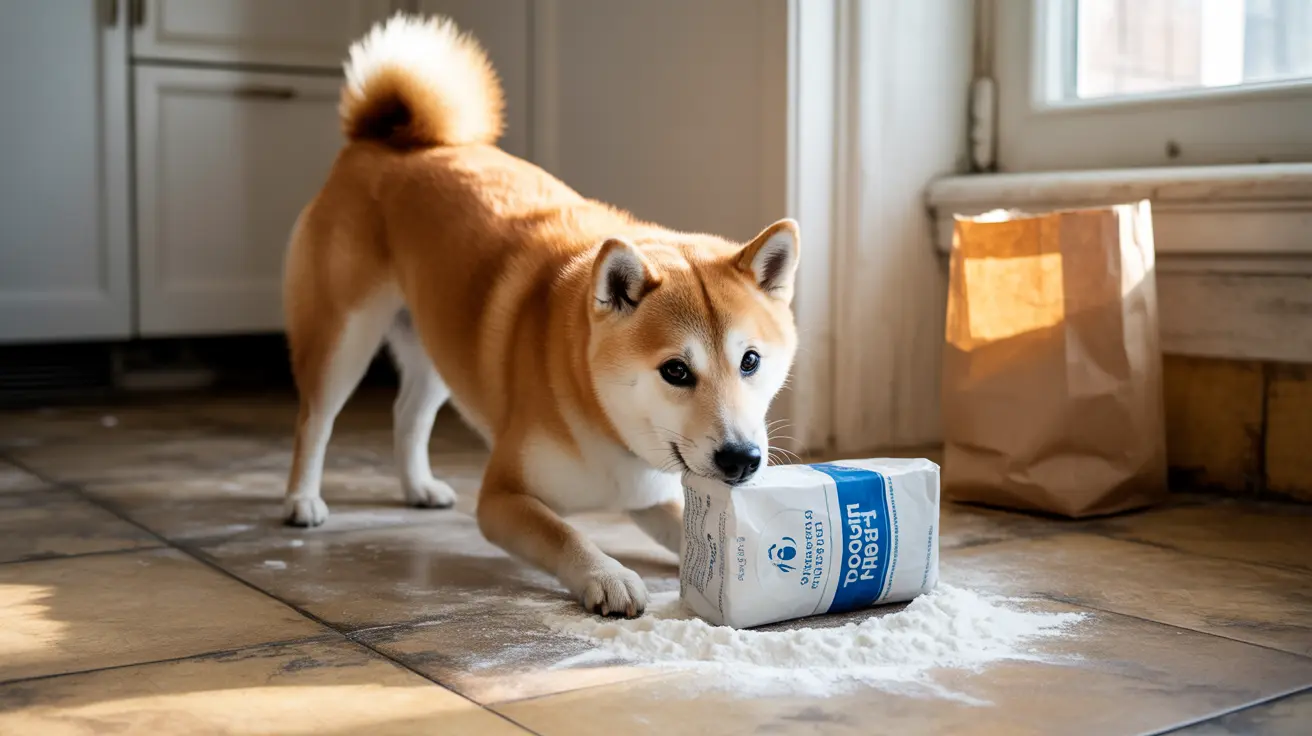Introduction
Many pet parents wonder about the safety of raw flour when it comes to their furry friends. Whether your dog has snatched some uncooked dough or gotten into the flour bag, understanding the risks and potential health implications is crucial. This comprehensive guide will explore everything you need to know about dogs consuming raw flour, including safety concerns, warning signs, and what to do if your pet ingests uncooked flour products.
The Risks of Raw Flour Consumption in Dogs
Raw flour poses several potential health risks to dogs. When consumed uncooked, flour can be difficult for dogs to digest and may lead to various gastrointestinal issues. The main concerns include:
- Bacterial contamination
- Digestive blockages
- Stomach upset
- Potential allergic reactions
Raw Flour vs. Cooked Flour
While cooked flour in proper portions can be safe for dogs, raw flour presents unique challenges. The cooking process helps break down the flour's complex structures, making it more digestible and eliminating potential bacterial contamination. When flour remains uncooked, it can:
- Create a paste-like substance in the digestive tract
- Harbor harmful bacteria
- Cause digestive discomfort
- Lead to nutrient absorption issues
Common Symptoms After Raw Flour Ingestion
If your dog has consumed raw flour, watch for these warning signs:
- Vomiting
- Diarrhea
- Lethargy
- Loss of appetite
- Abdominal discomfort
- Excessive thirst
- Bloating
Emergency Situations and When to Call the Vet
While raw flour itself isn't typically toxic, certain situations require immediate veterinary attention:
- Large quantities consumed
- Signs of blocked digestion
- Severe vomiting or diarrhea
- Extreme lethargy or weakness
- Consumption of raw dough containing yeast
Prevention and Safe Alternatives
To keep your dog safe from raw flour incidents:
- Store flour in sealed containers
- Keep baking ingredients out of reach
- Use dog-specific treats instead of raw ingredients
- Consider commercial dog treats over homemade ones
- Always supervise pets in the kitchen
Frequently Asked Questions
Can dogs safely eat raw flour, or is it harmful to their health?
Raw flour is not recommended for dogs. While not toxic, it can cause digestive issues and potentially harbor harmful bacteria. Cooked flour in appropriate amounts is generally safer for dogs.
What types of flour are safe for dogs, and which should be avoided due to allergies or toxicity?
The safest flours for dogs include oat flour, coconut flour, and chickpea flour. Wheat flour should be avoided for dogs with grain allergies. Any flour containing xylitol or artificial sweeteners is strictly forbidden.
What are the common signs that my dog might be allergic or sensitive to certain flours?
Common signs include itching, digestive upset, skin problems, ear infections, and excessive paw licking. If you notice these symptoms, consult your veterinarian for proper diagnosis.
How can I safely use flour in homemade dog treats without causing digestive problems?
Always use dog-safe flour types, bake treats thoroughly, and introduce new treats gradually. Start with small portions and monitor your dog's reaction.
What should I do if my dog accidentally eats raw dough or a large amount of raw flour?
Monitor your dog closely for signs of distress. If the flour contained yeast or if your dog shows concerning symptoms, contact your veterinarian immediately. For large amounts of raw flour, inducing vomiting may be recommended by your vet.
Conclusion
While raw flour isn't immediately toxic to dogs, it's best to prevent access to it and opt for safer alternatives. If your dog does consume raw flour, monitor them closely and contact your veterinarian if concerning symptoms develop. Remember that prevention is always better than treatment, so keep raw flour and uncooked dough safely stored away from curious paws.






